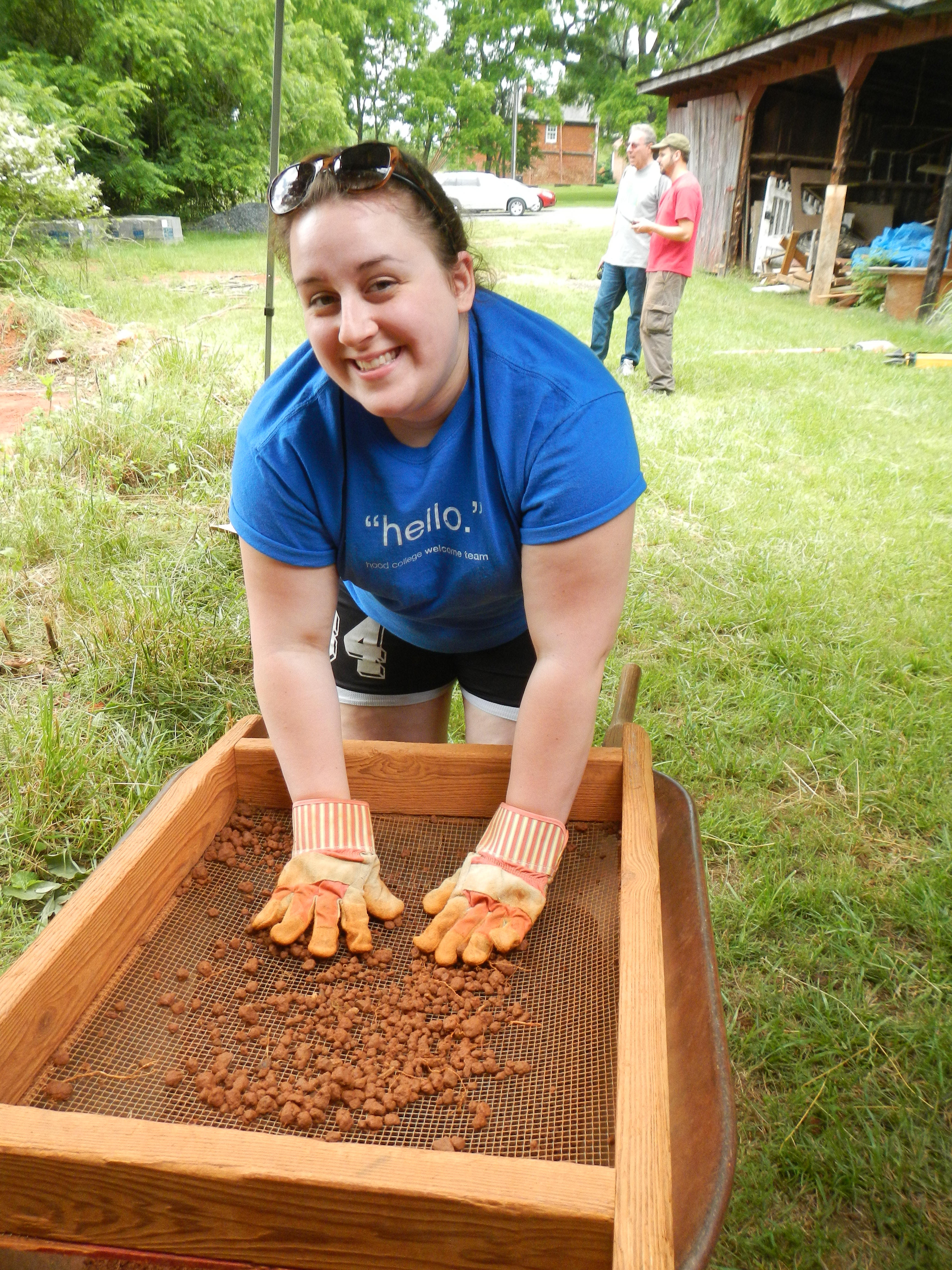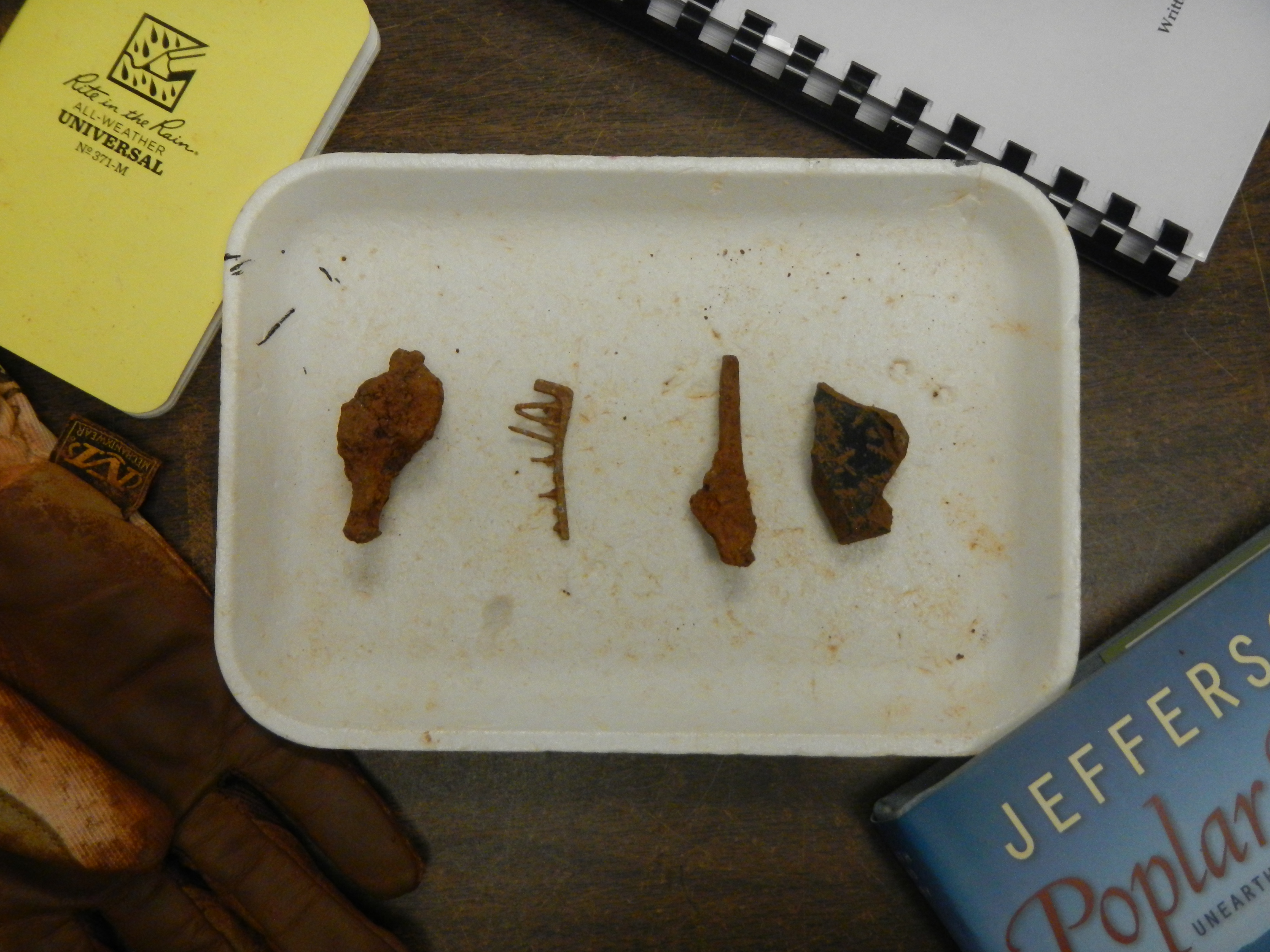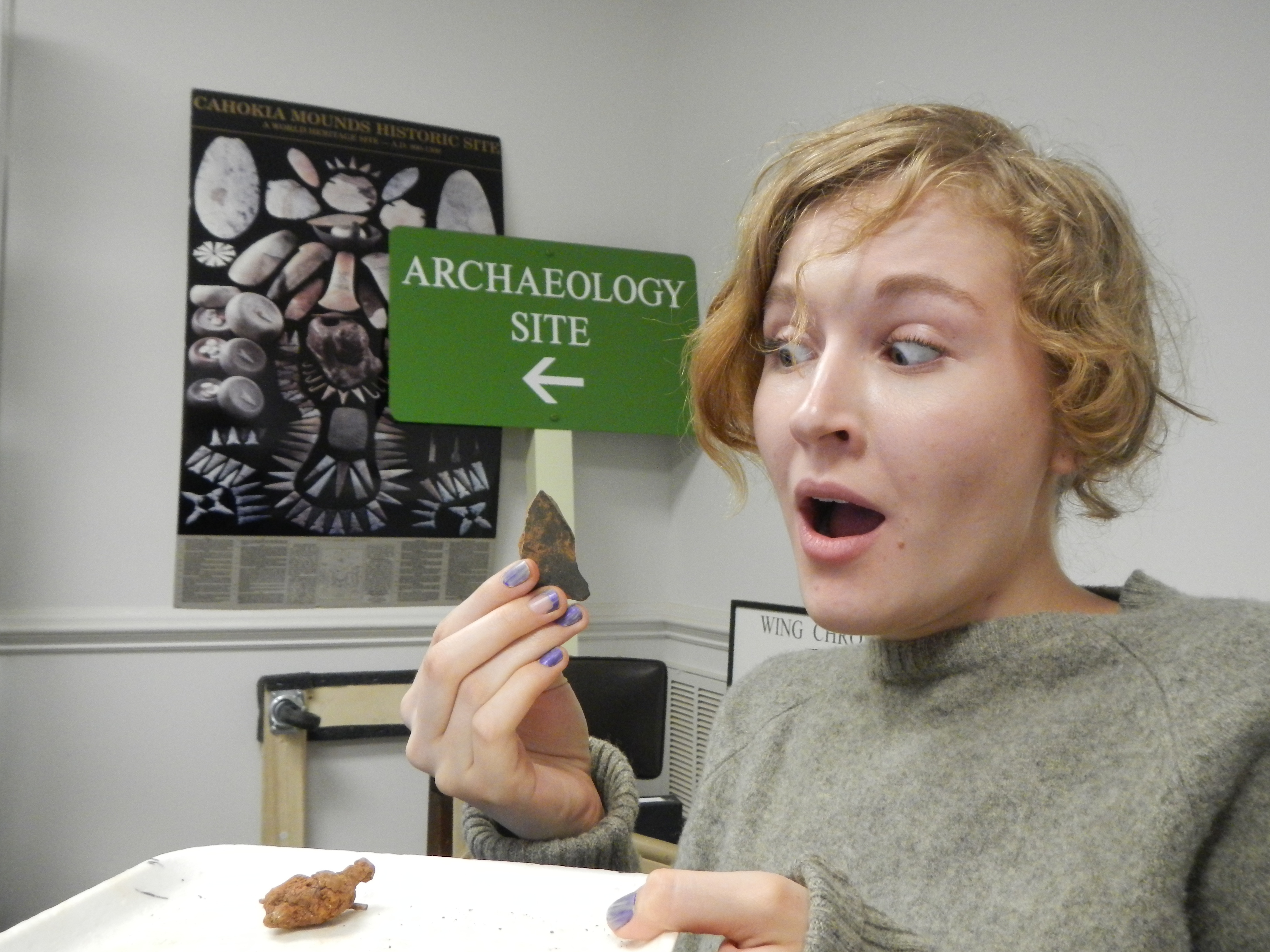Archaeology Blog
Field School Week 1
Week 1
By: Nathanael Kreimeyer and Helena Gray
On Monday, the students of Poplar Forest Field School began the excavations searching for the precise location of Thomas Jefferson’s Vegetable Garden. The current area being investigated is located behind Site B, southeast of the main house. This garden was mentioned in some of Jefferson’s letters. A vague description was given of being near the stables, but not defined exactly. Screening through the topsoil was the first step, and some very interesting artifacts were found including: pieces of brick, pieces of what is thought to be a candy dish, slag, charcoal, pieces of plastic, a piece of a metal comb, hand-wrought nails, a neck of a wine bottle, and a piece of unidentified metal. So far, the artifacts do not give a definitive answer as to whether the vegetable garden once stood on the spot, but continual excavation could lead to a more definitive conclusion.
On Tuesday, the sifting of the soil continued and surveying of the proposed garden area had begun. Jack Gary, and Eric Proebsting, with the assistance of interns Erika and Sidney led some of the students to start searching below the topsoil in excavating stains on the earth that may potentially be features. At this point, the stains are theorized to be plow scars from the garden or the field. During their time surveying, the students worked to grade the soil down to completely remove the topsoil.
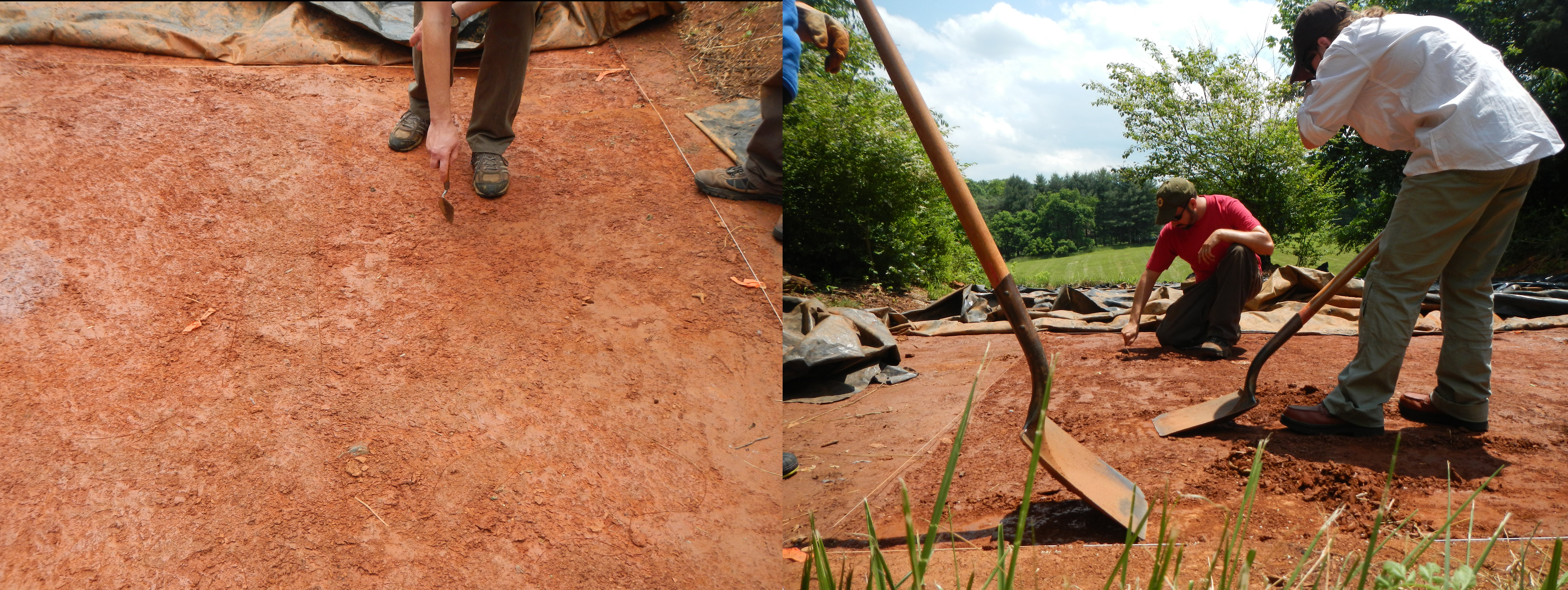
If you look closely, possible plowscars have been outlined with a trowel (left) and students carefully scrape down the site with shovels (right).
On Tuesday, several pieces of plastic and mortar were discovered, as well as more pieces of brick and slag. Our final day of the first week of excavation was quite sluggish, due to the rain the night prior. We continued to sift through the wet, dense Virginia clay in the morning dew. The topsoil was gleaned ever further to determine the true nature of the clay. More work will be done in the next week to continue the hunt for the exact parameters of Jefferson’s garden.
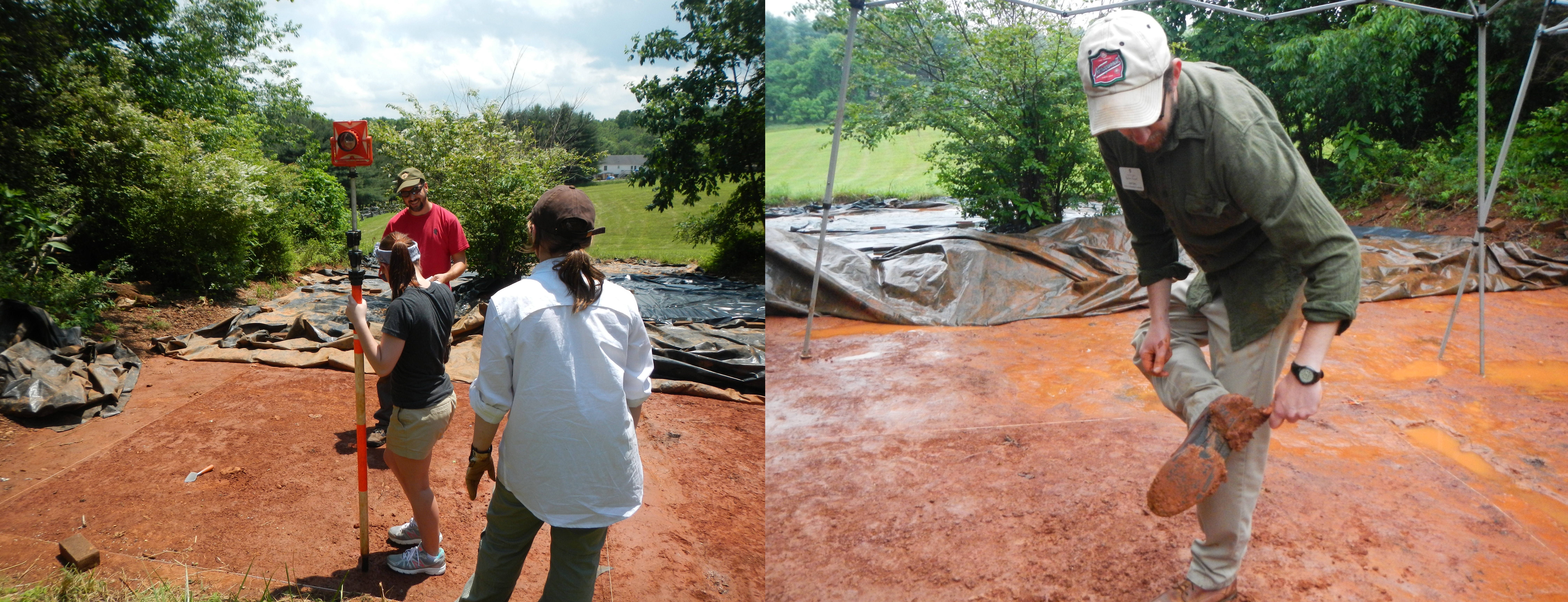
Senior Research Archaeologist Eric teaching students to use total station equipment (left) and Director of Archaeology Jack negotiates his footing in the very saturated dirt (right).
